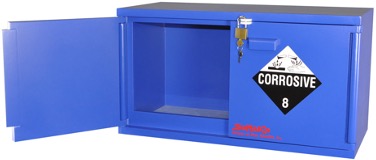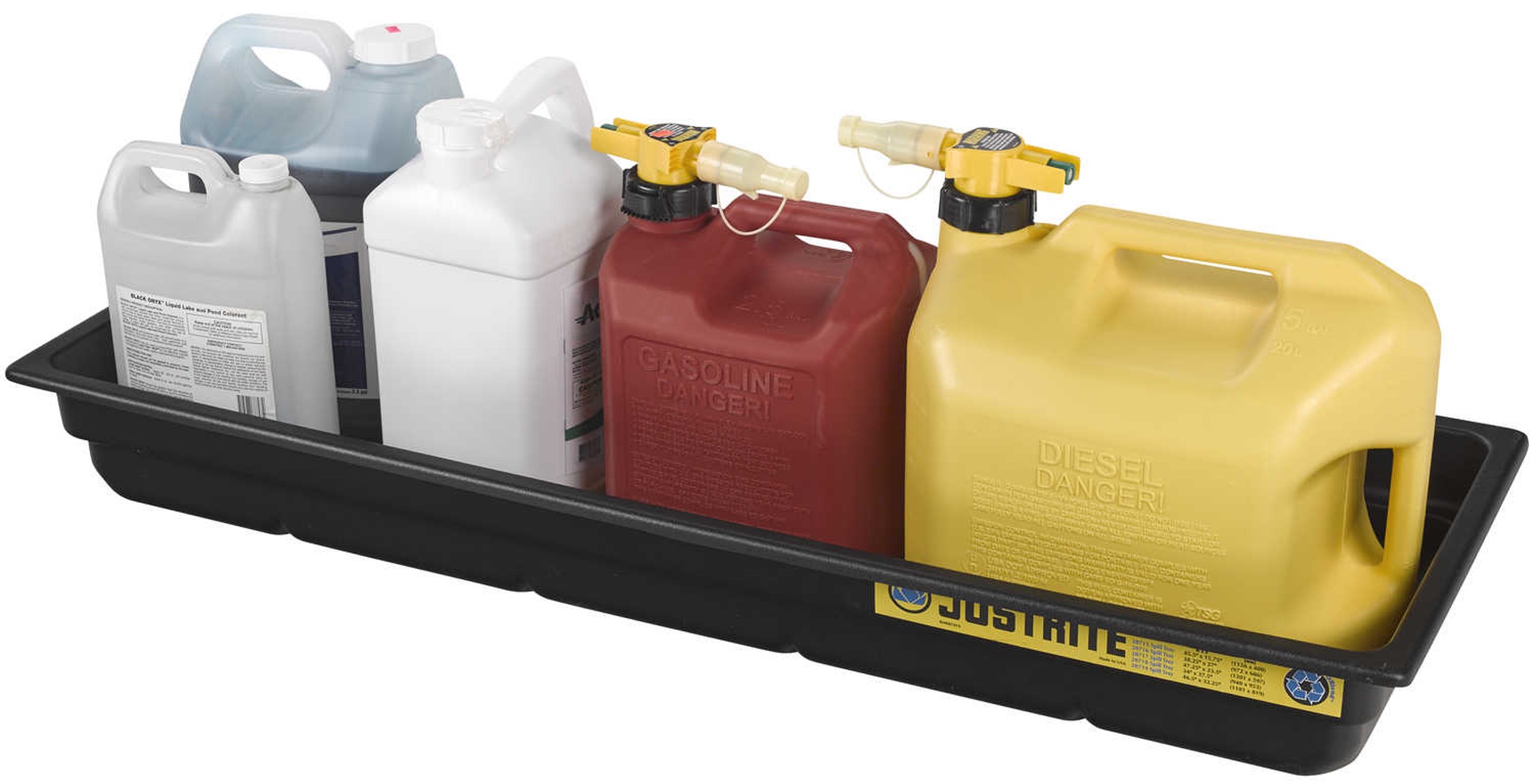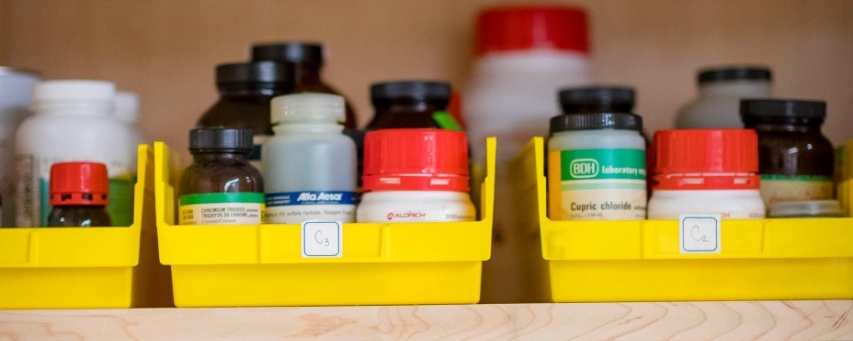Storing hazardous substances safely is important to protect human health and safety and prevent damage to property.



The safe storage of hazardous chemicals is an essential part of laboratory and shop safety. Chemical storage is complex—there is no one-size-fits-all plan to store chemicals—but there are regulations, campus requirements, and best practices that can guide the process. The general concept is to prevent chemicals from causing harm to people, property, other chemicals, or the environment.
In order to fully understand the hazards associated with stored chemicals you first need to know what chemicals are being stored. A current inventory and access to Safety Data Sheets for the chemicals on the inventory are necessary to evaluate the hazards and reduce exposure risks.
Best Practices
What is considered appropriate chemical storage in laboratories, art studios, and maintenance operations?
- Shelves should be level, stable, and secured to the wall or another stable surface.
- Store chemicals away from direct sunlight and sources of heat.
- Corrosive chemicals must be stored below eye level. It is recommended that all liquid chemicals be stored below 6 feet to limit overhead storage and handling hazards.
- Do not store chemicals in the sink, on the floor, window ledges, or balconies.
- Keep containers closed unless you are dispensing a chemical or adding to the container.
- Provide secondary containment for liquids whenever possible. Dishpans or polyethylene trays work
- Use rated storage cabinets or safety cans whenever possible to store flammables.
- Segregate chemicals according to their hazard classification to avoid unintended reactions.
Many chemicals belong to more than one chemical family or hazard class. In many cases, chemicals need to be evaluated on a case-by-case basis. Ideally, guidelines for each category should be observed, but this may not be possible in all instances.
Begin by categorizing and separating chemicals by the following categories. Note that the order is intentional, as discussed below.
- Pyrophorics
- Water reactives
- Flammables
- Corrosives
- Oxidizers
- Toxics
- No GHS Hazards or Irritant Effects Only
One strategy is to prioritize the hazards of a specific chemical. The hazards listed above are prioritized for this purpose, from most severe to least. A pyrophoric chemical, for example, may also be a flammable liquid, but the pyrophoric property should outweigh the flammability for storage purposes.
Glacial acetic acid is a common example, as it is both a corrosive acid and a combustible liquid. It should be stored away from corrosive bases, such as sodium hydroxide, and also from oxidizing acids, such as nitric acid. Storing acetic acid in a flammable storage cabinet would be appropriate, prioritizing the combustibility over the corrosivity. If flammable storage space is at a premium, storage in a corrosives cabinet would also be acceptable; however, it would need to be further segregated from the other incompatible corrosives by utilizing multiple cabinets or secondary containment.
Source: University of Wisconsin